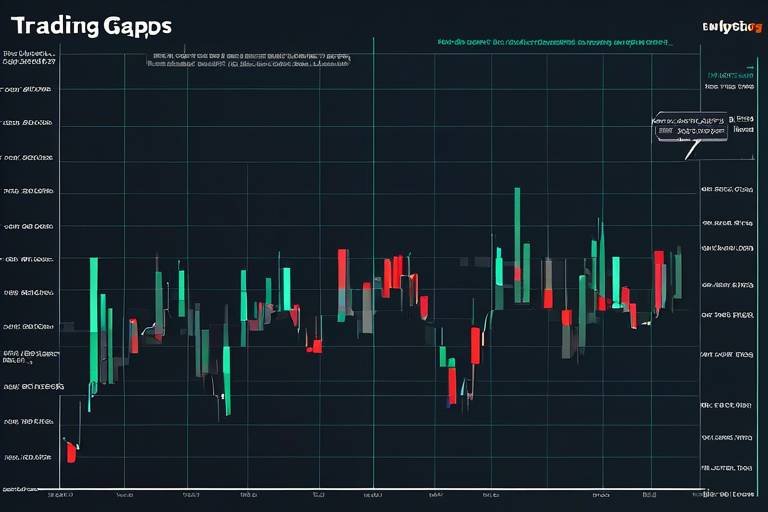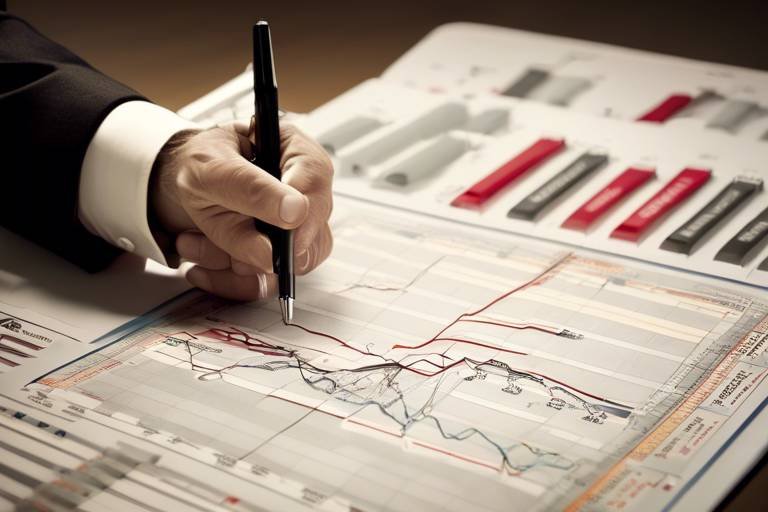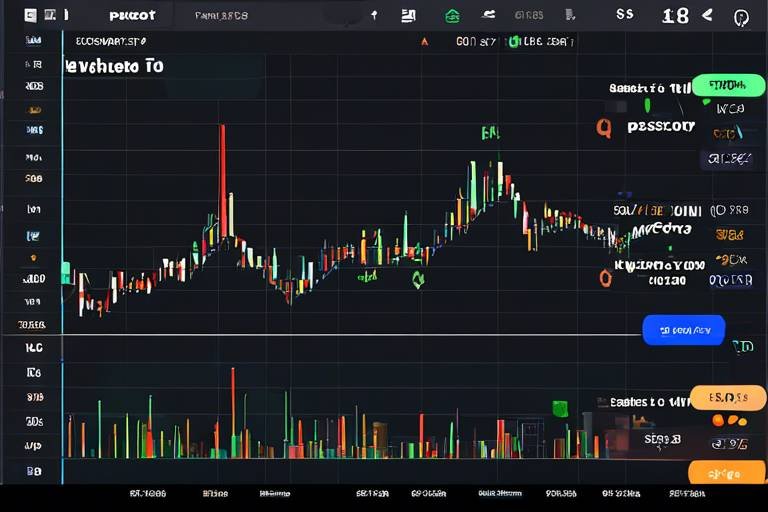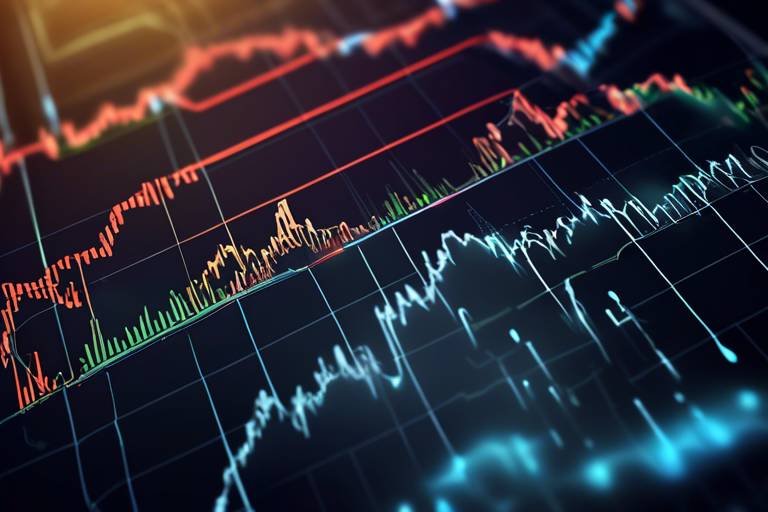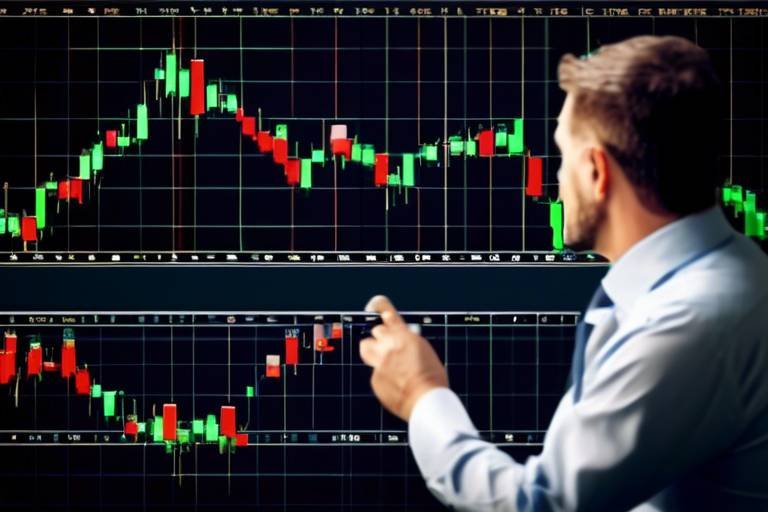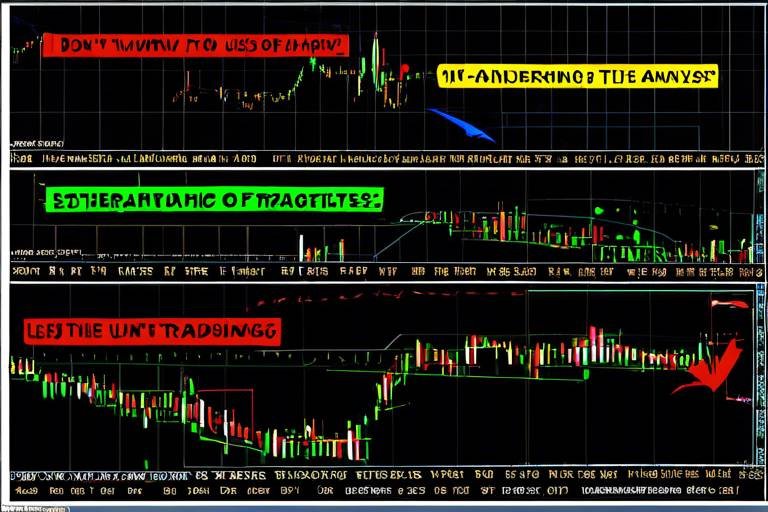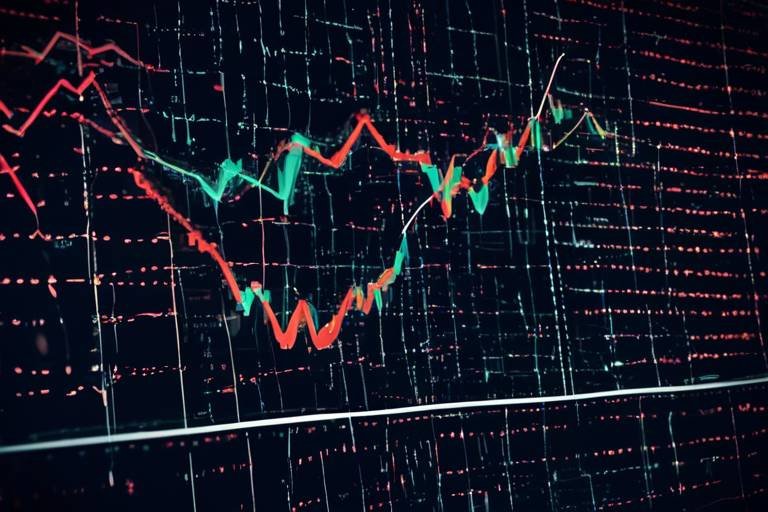The Impact of Market News on Technical Analysis
In the fast-paced world of trading, understanding how market news impacts technical analysis is crucial for making informed decisions. Traders often rely on charts and historical data to predict future price movements, but when news breaks, it can send shockwaves through the market, altering sentiment and price behavior almost instantaneously. Have you ever noticed how a seemingly minor news announcement can lead to a significant price swing? This is the interplay between market sentiment and technical analysis, and it’s vital for traders and investors to grasp this relationship to enhance their decision-making processes.
At its core, technical analysis is about studying price charts and indicators to forecast future price movements. It’s like piecing together a puzzle where each price point is a clue about where the market might be headed. Traders use various tools such as moving averages, relative strength index (RSI), and candlestick patterns to identify trends and potential reversal points. However, it’s not just about the numbers; market psychology plays a significant role in trading decisions. For instance, when traders see a stock's price breaking through a resistance level, they might feel compelled to buy, driving the price even higher. This is the essence of crowd behavior—traders reacting to the same signals, creating a domino effect.
Market news encompasses a broad spectrum of information, including economic indicators, geopolitical events, and corporate announcements. Each of these can create volatility and significantly impact the effectiveness of technical analysis. For example, when a company releases its quarterly earnings report, it can lead to sharp price movements that technical indicators may not predict. The sudden influx of new information can create a disconnect between what the charts suggest and the actual market behavior, making it essential for traders to stay updated on the latest news.
Different types of market news can influence traders' perspectives in various ways:
- Economic Indicators: These include data points like GDP growth, unemployment rates, and inflation figures. Traders closely monitor these indicators as they provide insights into the overall health of an economy.
- Geopolitical Events: Events such as elections, trade negotiations, or conflicts can lead to sudden market shifts. For instance, a surprise election result might cause a country's currency to fluctuate dramatically.
- Corporate Announcements: Earnings reports, mergers, and acquisitions can also impact stock prices, often in ways that technical analysis alone cannot predict.
Economic indicators are vital for understanding market sentiment. For example, if the unemployment rate drops significantly, it may signal economic strength, leading traders to buy stocks. Conversely, rising inflation might prompt fears of interest rate hikes, causing traders to sell. These indicators are often interpreted alongside technical analysis, helping traders make more informed decisions. The challenge lies in the timing—reacting quickly to news can be the difference between profit and loss.
Geopolitical events can create uncertainty and volatility in the markets. For instance, consider the impact of a sudden conflict in a resource-rich region; oil prices might spike, affecting related stocks and commodities. Traders must be agile, adjusting their technical analysis to account for these unpredictable events. It’s like trying to navigate a ship through a storm—having a solid map (technical analysis) is essential, but being aware of the weather (market news) is just as critical.
Market sentiment, often driven by news, plays a crucial role in price movements. Traders gauge sentiment through various means, including social media trends, news headlines, and market indicators. When sentiment shifts, it can lead to rapid price changes that technical analysis may not fully capture. For instance, if a widely followed analyst downgrades a stock, it can trigger a wave of selling, regardless of what the charts indicate. Understanding this dynamic is essential for any trader looking to navigate the complexities of the market.
Combining market news with technical analysis can significantly enhance trading strategies. By integrating news analysis into technical frameworks, traders can improve their decision-making processes. This approach allows for a more comprehensive view of the market, considering both historical data and current events. For example, a trader might identify a bullish chart pattern but also check for upcoming economic reports that could influence price action. This dual approach can provide a more balanced perspective and help mitigate risks.
Traders must be willing to adapt their strategies based on news events. For instance, if a major economic report is set to be released, a trader might choose to tighten their stop-loss orders or reduce their position size. Techniques such as using news filters can help traders stay ahead of the curve by allowing them to focus on the most impactful news items. It’s about being proactive rather than reactive, ensuring that technical analysis remains relevant even in the face of sudden market shifts.
Effective risk management is essential when trading based on news. Traders should implement strategies to mitigate risks associated with market volatility influenced by news events. This could include setting tighter stop-loss orders or diversifying their portfolio to spread risk. Additionally, maintaining a disciplined approach to trading can prevent emotional decisions driven by news reactions. Remember, it’s not just about making money; it’s about protecting what you have.
Q: How does market news affect technical analysis?
A: Market news can create volatility that may disrupt established technical patterns, leading to unexpected price movements that technical analysis might not predict.
Q: Can I rely solely on technical analysis?
A: While technical analysis is a valuable tool, incorporating market news can provide a more comprehensive understanding of market dynamics and improve decision-making.
Q: What are some effective risk management strategies?
A: Effective strategies include setting stop-loss orders, diversifying your portfolio, and maintaining a disciplined approach to trading to avoid emotional decisions.

Understanding Technical Analysis
Technical analysis is like the art of reading a map in the world of trading. It involves studying price charts and various indicators to forecast future price movements based on historical data. Just like a seasoned traveler relies on a map to navigate unknown territories, traders use technical analysis to navigate the complex markets. The core principle of technical analysis is that all known information is reflected in the price, which means that by examining past price movements, traders can identify patterns that may predict future behavior.
At its core, technical analysis is built on a few foundational principles. One of the most important is the concept of market psychology. Traders often act based on emotions such as fear and greed, which can lead to price movements that deviate from what traditional economic indicators might suggest. This psychological aspect makes technical analysis not just about numbers and charts, but about understanding the collective mindset of market participants.
In terms of tools, technical analysts utilize various indicators and chart patterns to assist in their decision-making. Some of the most popular tools include:
- Moving Averages: These help smooth out price data to identify trends over a specific period.
- Relative Strength Index (RSI): This momentum oscillator measures the speed and change of price movements, indicating whether an asset is overbought or oversold.
- Bollinger Bands: These are volatility indicators that consist of a middle band (a moving average) and two outer bands that are standard deviations away from the middle band.
These tools are not just standalone indicators; they often work best when used in conjunction with one another. For example, a trader might look for a crossover of moving averages in conjunction with RSI levels to make a more informed trading decision. The interplay between these indicators can provide a clearer picture of potential price movements.
Moreover, understanding the importance of market psychology cannot be overstated. Traders must be aware that price movements are not solely dictated by historical data but also by the reactions of other traders to that data. For instance, if a stock has consistently shown a bullish trend, but a sudden piece of bad news emerges, traders might panic, causing a sharp decline in price. This is where technical analysis can sometimes falter, as it may not account for sudden emotional reactions to news events.
In summary, technical analysis is a vital tool for traders, providing insights into potential future price movements based on historical data and market psychology. It combines various indicators and tools to create a comprehensive view of market behavior. However, as we will explore later, the integration of market news into technical analysis can significantly enhance trading strategies, allowing traders to adapt to the ever-changing landscape of the financial markets.

The Role of Market News
Market news plays a pivotal role in shaping the financial landscape, acting as a catalyst for price movements and influencing trader sentiment. When we talk about market news, we're referring to a wide array of information that can sway the market's direction, including economic reports, corporate announcements, and geopolitical events. Each piece of news carries the potential to create waves in the market, sometimes leading to significant volatility that can either bolster or undermine technical analysis. As traders, it's crucial to recognize that while technical analysis relies heavily on historical price data, it cannot operate in a vacuum; the surrounding news environment is just as important.
Think of technical analysis as a map guiding you through the complex terrain of the market. Now, imagine that market news is the weather report for that day. If the skies are clear, you can navigate with confidence. However, if a storm is brewing, you might need to adjust your course. This analogy perfectly illustrates how news can affect trading decisions. For instance, a positive earnings report from a major corporation can send its stock soaring, while a sudden political upheaval might lead to a sharp decline. Understanding this interplay between market news and technical analysis is essential for traders who want to make informed decisions.
Moreover, market news isn't just a single entity; it encompasses various types of information that can have different impacts on market behavior. Here are a few categories of market news:
- Economic News: This includes indicators like GDP growth, unemployment rates, and inflation figures. These reports can provide insight into the overall health of an economy and influence investor sentiment.
- Geopolitical News: Events such as elections, trade negotiations, and conflicts can lead to sudden shifts in market dynamics. Traders must be alert to how these events might disrupt established technical patterns.
- Corporate Announcements: Earnings reports, mergers, and acquisitions can create immediate reactions in stock prices, often overshadowing technical signals.
It's essential to appreciate that the impact of market news is not always straightforward. Sometimes, the market may react positively to bad news or vice versa, depending on the context and prevailing sentiment. This unpredictability is what makes trading both exciting and challenging. As traders, we need to stay on our toes and be ready to adapt our strategies in response to breaking news. The key is to maintain a balance between technical analysis and the insights provided by market news, allowing us to navigate the market's ebbs and flows with greater precision.
In conclusion, the role of market news cannot be underestimated. It adds a layer of complexity to technical analysis, influencing price movements and trader sentiment in profound ways. By staying informed and integrating news analysis into our trading strategies, we can enhance our decision-making processes and ultimately improve our trading outcomes.
- How does market news affect technical analysis?
Market news can create volatility that may disrupt established technical patterns, making it essential for traders to consider news events when analyzing price movements. - What types of market news should traders pay attention to?
Traders should focus on economic indicators, geopolitical events, and corporate announcements, as these can significantly influence market sentiment and price actions. - Can technical analysis still be effective during volatile news events?
Yes, but traders need to adapt their strategies and be prepared for unexpected market reactions that can occur due to news.

Types of Market News
Understanding the is crucial for any trader looking to navigate the complex waters of financial markets. Market news can be broadly categorized into three main types: economic news, political news, and social news. Each of these categories has its unique characteristics and implications for market behavior, influencing how traders interpret technical indicators and price movements.
First, let's delve into economic news. This type of news includes important economic indicators such as GDP growth rates, unemployment statistics, and inflation reports. These indicators provide insights into the health of an economy and can significantly sway market sentiment. For example, a surprising increase in unemployment rates might lead to a bearish outlook, prompting traders to adjust their positions accordingly. In contrast, strong GDP growth can boost investor confidence, leading to bullish trends. The correlation between economic indicators and market movements is often reflected in technical analysis, where traders look for patterns that align with these fundamental shifts.
Next, we have political news, which encompasses events like elections, government policy changes, and international relations. Political stability or instability can create volatility in the markets, as traders react to the potential implications of these events. For instance, an unexpected election outcome can lead to rapid price swings as traders reassess their forecasts based on the new political landscape. Geopolitical tensions can also have a ripple effect, causing traders to seek safe-haven assets, which can disrupt established technical patterns. Understanding these dynamics allows traders to better anticipate market reactions to political events.
Lastly, social news covers a range of topics from public sentiment to social media trends. In today's digital age, information spreads rapidly, and social media can amplify market reactions. For example, a viral tweet about a particular stock can lead to sudden price surges or drops, making it essential for traders to stay informed about social trends. Moreover, social factors, such as consumer confidence reports and trends in public behavior, can provide additional context for technical analysis. Traders must be aware of how these social dynamics can influence market sentiment and, consequently, price movements.
In summary, the interplay between these types of market news creates a complex environment that traders must navigate. By understanding the nuances of economic, political, and social news, traders can enhance their technical analysis, making it more robust and responsive to real-time developments in the market. This knowledge empowers them to make informed decisions, ultimately leading to better trading outcomes.

Economic Indicators
Economic indicators are vital signs of the health of a country's economy, and they can significantly influence market sentiment and trading behaviors. These indicators, which include metrics such as Gross Domestic Product (GDP), unemployment rates, and inflation data, serve as a compass for traders navigating the often turbulent waters of financial markets. When traders analyze these indicators, they are not just looking at numbers; they are interpreting the story behind those numbers, which can lead to decisive market movements.
For example, a strong GDP growth report usually signals a robust economy, which can lead to increased investor confidence. Conversely, a rise in unemployment rates can create a sense of unease among traders, prompting them to reevaluate their positions. The interplay between these economic indicators and technical analysis is essential. Traders often look for patterns in price movements that correspond with the release of these indicators, using them to make informed decisions about when to enter or exit trades.
To illustrate the impact of economic indicators on market behavior, consider the following table that summarizes key indicators and their potential effects on trading:
| Economic Indicator | Potential Market Effect |
|---|---|
| GDP Growth Rate | Positive growth can boost market confidence, leading to higher stock prices. |
| Unemployment Rate | Higher unemployment may lead to bearish sentiment, causing stocks to drop. |
| Inflation Rate | Rising inflation can lead to speculation about interest rate hikes, affecting stock valuations. |
In addition to these indicators, traders often pay attention to consumer confidence indexes and manufacturing data. These reports can provide insights into potential future economic performance and market direction. For instance, a surge in consumer confidence may indicate increased spending, which can positively influence corporate earnings and, in turn, stock prices. Therefore, understanding these indicators is not just about the numbers; it’s about grasping the broader economic narrative they represent.
Moreover, the timing of these reports is crucial. Economic indicators are typically released on a regular schedule, and savvy traders will prepare their strategies around these dates. They might adjust their positions in anticipation of a report or react quickly to the news as it breaks. This responsiveness can lead to significant profits or losses, underscoring the importance of being well-informed and agile in the market.
Ultimately, the relationship between economic indicators and technical analysis is complex but essential for successful trading. By integrating these indicators into their analysis, traders can enhance their understanding of market dynamics and make more informed decisions. In a world where news travels fast and market conditions can change in the blink of an eye, being equipped with the right information can make all the difference.
- What are economic indicators? Economic indicators are statistical metrics that provide insights into the economic performance of a country, helping traders and investors gauge market sentiment.
- How do economic indicators affect market sentiment? Economic indicators can influence market sentiment by signaling the strength or weakness of an economy, thus impacting investor confidence and trading decisions.
- Why is it important to integrate economic indicators with technical analysis? Integrating economic indicators with technical analysis allows traders to make more informed decisions by considering both historical price movements and current economic conditions.

Geopolitical Events
Geopolitical events are like the wildcards of the trading world. They can shake up markets in the blink of an eye, often leading to unexpected price movements that can throw technical analysis out the window. Think of it this way: if technical analysis is your trusty map for navigating the trading landscape, geopolitical events are the sudden storms that can either clear the path or create chaos. From elections to international conflicts, these events can drastically alter market sentiment and disrupt established technical patterns.
When a significant geopolitical event occurs, traders often scramble to reassess their positions. For instance, consider the impact of a major election in a country with a significant economy. The uncertainty surrounding the outcome can lead to increased volatility, as traders react to news and speculation. This volatility can cause technical indicators, such as moving averages and support/resistance levels, to become less reliable. Traders who rely solely on technical analysis may find themselves at a disadvantage if they don't consider the broader implications of these events.
To illustrate this point, let's look at a few examples of how geopolitical events have historically influenced the markets:
| Event | Date | Impact on Market |
|---|---|---|
| Brexit Referendum | June 23, 2016 | Sharp decline in the British Pound and increased volatility in European markets. |
| U.S.-China Trade War | 2018-2020 | Fluctuations in stock prices and commodities as tariffs were implemented and negotiations unfolded. |
| COVID-19 Pandemic Declaration | March 11, 2020 | Global market sell-off, with many technical indicators failing to predict the extent of the downturn. |
As you can see from the table, these events not only led to immediate market reactions but also had long-lasting effects on investor sentiment and market trends. Traders who were able to integrate news analysis into their technical strategies likely fared better than those who relied solely on charts and indicators.
Moreover, geopolitical events often lead to a change in market psychology. Traders may become overly cautious or overly optimistic, which can create feedback loops that further amplify price movements. Understanding this psychological component is crucial for anyone looking to navigate the complexities of the market during turbulent times.
In summary, while technical analysis provides valuable insights into price movements, it is essential to remain aware of the potential influence of geopolitical events. By considering these factors, traders can better prepare for sudden shifts in the market and adjust their strategies accordingly. Ignoring the news can be like sailing without a compass – you might end up lost in uncharted waters!

Market Sentiment and Price Movements
Market sentiment is essentially the collective feeling or attitude of traders and investors towards a particular security or market. This sentiment can be influenced by a myriad of factors, including but not limited to, recent news, economic indicators, and even social media trends. Think of market sentiment as the mood of the market; when traders are feeling optimistic, they tend to buy more, pushing prices up. Conversely, when fear and uncertainty take hold, selling can lead to a downward spiral in prices. This dynamic relationship between sentiment and price movements is crucial for understanding how technical analysis can be impacted.
To illustrate this point, let's consider a hypothetical scenario. Imagine a company that just released its quarterly earnings report, and the results are better than expected. The news travels fast, and suddenly, traders become optimistic about the company's future. This surge in positive sentiment can cause a spike in buying activity, which in turn drives up the stock price. However, if the following week, a major geopolitical event occurs—such as a sudden conflict in a region where the company has significant operations—this can shift sentiment dramatically. Traders may panic, leading to a sell-off that reverses any gains made from the initial positive news.
Understanding how to gauge market sentiment is vital for traders using technical analysis. Sentiment indicators, such as the Consumer Confidence Index (CCI) or the Fear and Greed Index, can provide insights into whether the market is feeling bullish or bearish. These indicators can be used in conjunction with traditional technical analysis tools like moving averages and support/resistance levels to create a more holistic trading strategy.
Additionally, the interplay between sentiment and price movements can be visualized in a simple table that outlines the relationship:
| Market Sentiment | Price Movement | Technical Analysis Implication |
|---|---|---|
| Optimistic | Price Increase | Look for bullish patterns, such as breakouts above resistance levels. |
| Pessimistic | Price Decrease | Identify bearish patterns, such as breakdowns below support levels. |
| Neutral | Sideways Movement | Focus on range trading strategies within established support and resistance. |
In summary, market sentiment is a powerful force that can sway price movements in significant ways. It’s essential for traders to remain aware of the prevailing sentiment and to incorporate this understanding into their technical analysis. By doing so, they can make more informed decisions that align with both market psychology and technical indicators. This integration not only enhances the effectiveness of trading strategies but also helps in anticipating potential market shifts before they happen.
- What is market sentiment? Market sentiment refers to the overall attitude of traders and investors towards a particular market or security, often influenced by news and events.
- How does market sentiment affect price movements? Positive sentiment can lead to increased buying activity, driving prices up, while negative sentiment can cause selling pressure, leading to price declines.
- What tools can I use to gauge market sentiment? Traders often use sentiment indicators such as the Consumer Confidence Index and the Fear and Greed Index to assess market mood.
- Can technical analysis alone predict price movements? While technical analysis is valuable, incorporating market sentiment can provide a more comprehensive view and improve decision-making.
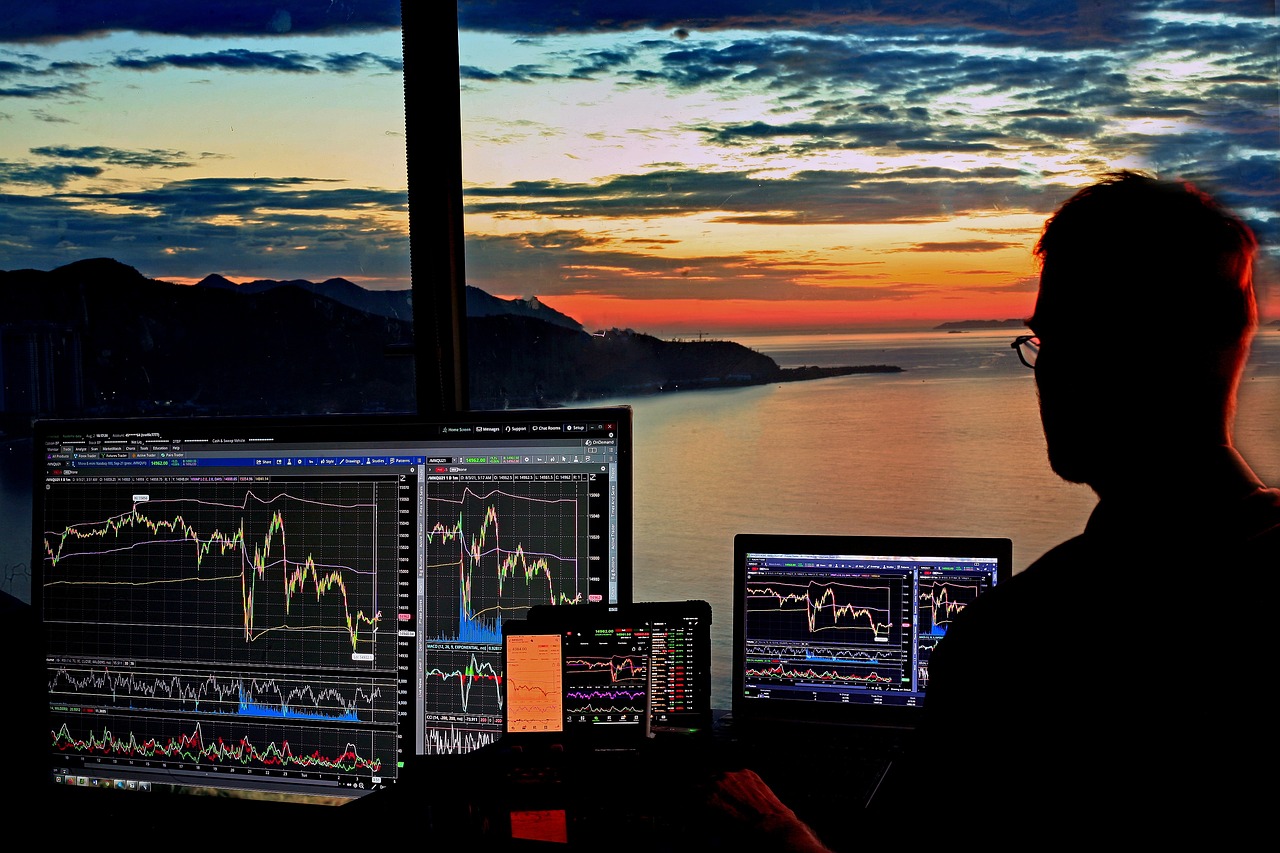
Integrating News with Technical Analysis
In the fast-paced world of trading, integrating market news with technical analysis is not just a strategy; it's a necessity. Imagine trying to navigate a ship without considering the weather conditions—it's a recipe for disaster. Similarly, traders who ignore the news while relying solely on price charts may find themselves sailing into turbulent waters. By blending news analysis with technical indicators, traders can create a more holistic approach to market movements, enhancing their ability to make informed decisions.
To effectively integrate news into technical analysis, it's crucial to understand how news events can alter market dynamics. For instance, a sudden announcement of a significant economic indicator, like a rise in unemployment rates, can create immediate volatility in the markets. Traders who are attuned to such events can adjust their strategies in real-time, potentially capitalizing on price movements that might otherwise go unnoticed. This is where the synergy between news and technical analysis truly shines.
One effective method for integrating news with technical analysis is to utilize a combination of technical indicators and news calendars. By keeping an eye on scheduled news releases—such as GDP reports, central bank meetings, and employment figures—traders can anticipate potential price movements. For example, before the release of a major economic report, a trader might notice a tightening range in a currency pair. This could signal that the market is preparing for a breakout, influenced by the upcoming news. By plotting this on a chart and aligning it with technical indicators like the Relative Strength Index (RSI) or Moving Averages, traders can make more educated predictions.
Moreover, understanding market sentiment is pivotal. News can sway sentiment dramatically, and recognizing whether the market is bullish or bearish can help traders adjust their technical analysis accordingly. For example, if positive news about a company's earnings is released, the price might surge, leading traders to look for buy signals in their technical indicators. Conversely, negative news can trigger sell signals. By monitoring sentiment indicators alongside technical patterns, traders can develop a more nuanced view of the market.
Another important aspect of this integration is the timing of trades. The market often reacts quickly to news, and having a strategy in place that allows for swift execution can make all the difference. Traders might consider using stop-loss orders or limit orders to manage their positions effectively during volatile periods. This proactive approach not only protects capital but also allows traders to seize opportunities as they arise.
Finally, it's essential to remain adaptable. The financial markets are constantly evolving, and what worked yesterday may not work today. By continuously refining their strategies based on the interplay between news and technical analysis, traders can stay ahead of the curve. This adaptability is akin to being a skilled surfer who reads the waves and adjusts their stance accordingly to ride the best swells.
In conclusion, integrating market news with technical analysis is a powerful strategy that can enhance trading outcomes. By understanding the relationship between news events and price movements, traders can make more informed decisions, adapt their strategies in real-time, and ultimately navigate the markets with greater confidence. Remember, the key to successful trading lies not just in the charts, but also in understanding the stories that drive those charts.
- What is the best way to integrate news with technical analysis?
Utilizing news calendars and monitoring sentiment indicators alongside technical indicators can help traders anticipate market movements effectively. - How often should I check for news updates?
Regularly checking for news updates, especially before major economic announcements, is crucial for making informed trading decisions. - Can technical analysis work without considering news?
While technical analysis can provide valuable insights, ignoring news can lead to missed opportunities and unexpected losses due to market volatility.
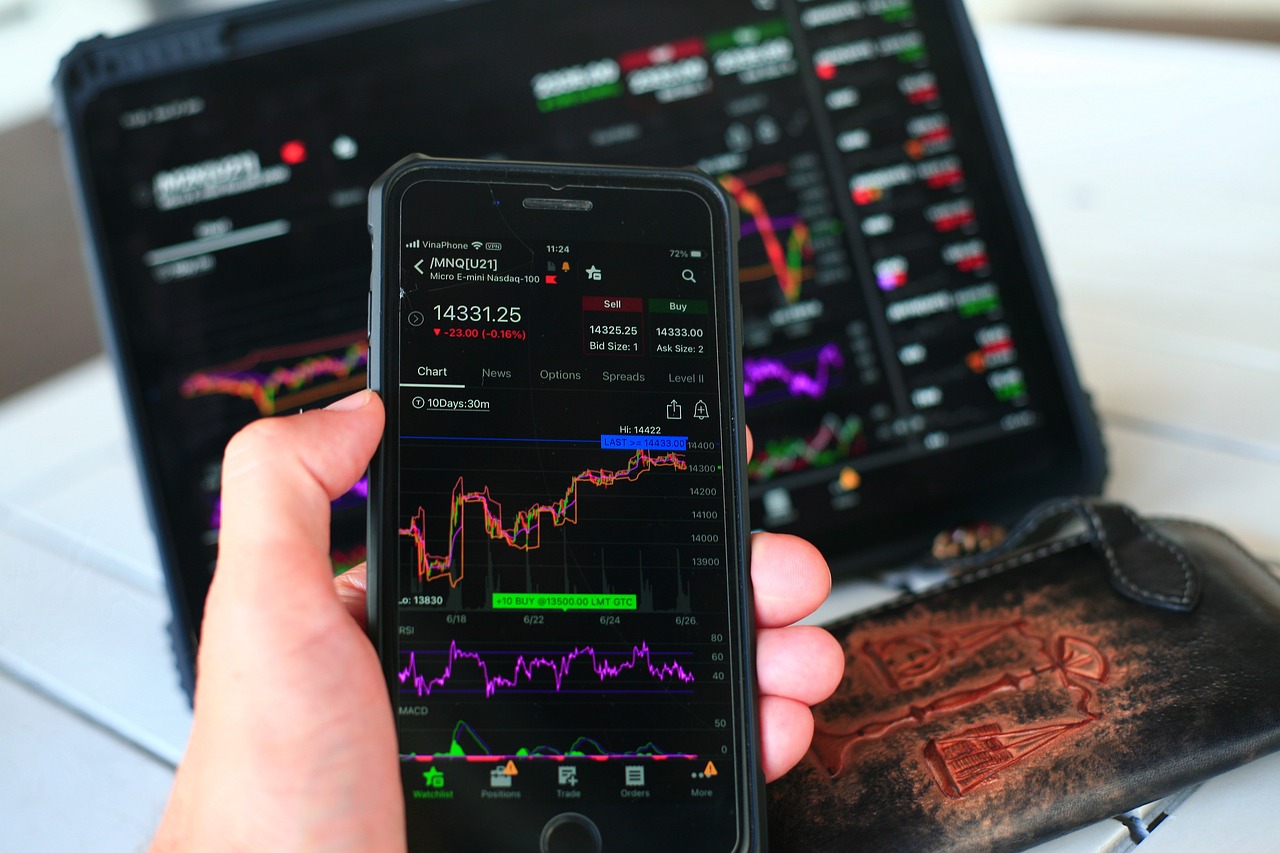
Adapting Trading Strategies
In the fast-paced world of trading, adapting your strategies in response to market news is not just a smart move; it's essential for survival. Imagine you're a surfer riding a wave; if you don't adjust your stance and paddle according to the swell, you're likely to wipe out. Similarly, traders must be agile, ready to pivot their approaches based on the latest news that can shake the market. This section delves into the various techniques traders can employ to ensure their strategies remain robust and effective in the face of ever-changing market conditions.
One of the most effective ways to adapt your trading strategy is to stay informed about the latest economic reports, earnings announcements, and geopolitical events. For instance, when the Federal Reserve announces a change in interest rates, it can send ripples through the market. Traders who are aware of such announcements can prepare to adjust their positions accordingly. This proactive approach can mean the difference between profit and loss. Moreover, employing a calendar to track significant news events can help traders anticipate market volatility, allowing them to position themselves strategically.
Another vital aspect of adapting trading strategies is to utilize technical analysis tools in conjunction with market news. For example, if a trader observes a bullish pattern in a stock but hears negative news about the company's management, it might be wise to reconsider the position. Here, the trader can use indicators like the Relative Strength Index (RSI) or Moving Averages to gauge whether the bullish trend is likely to hold. By combining these tools with real-time news, traders can make more informed decisions that align with current market sentiment.
Moreover, traders should consider implementing a flexible risk management strategy. This means adjusting stop-loss orders and position sizes based on the potential impact of news events. For example, if a trader is holding a position during a major earnings report, they might choose to tighten their stop-loss to protect against unexpected volatility. By being prepared for sudden market shifts, traders can safeguard their investments while still capitalizing on potential opportunities.
Ultimately, the key to successfully adapting trading strategies lies in maintaining a balance between technical analysis and market awareness. As the market reacts to news, traders must continuously evaluate their positions and be willing to make swift adjustments. This dynamic approach not only enhances the chances of success but also fosters a deeper understanding of market behavior. So, the next time you hear breaking news, remember that it's not just noise; it's a signal that could shape your trading strategy for the better.
- What is the importance of adapting trading strategies?
Adapting trading strategies is crucial as it allows traders to respond effectively to market changes influenced by news events, thereby maximizing their chances of success. - How can I stay informed about market news?
Traders can stay informed through financial news websites, economic calendars, and market analysis reports to anticipate significant events that may impact their trading decisions. - What tools can I use for technical analysis?
Common tools for technical analysis include Moving Averages, Bollinger Bands, and the Relative Strength Index (RSI), which help traders identify trends and potential entry and exit points. - How should I adjust my risk management strategy?
Risk management strategies should be flexible, allowing traders to adjust stop-loss orders and position sizes based on the volatility expected from upcoming news events.

Risk Management Techniques
When it comes to trading in the financial markets, particularly in the context of integrating market news with technical analysis, having robust risk management techniques is not just a good idea; it's essential. Think of risk management as a safety net that protects you from the inevitable ups and downs of the market. Just like a tightrope walker uses a safety harness, traders need strategies to minimize potential losses when unexpected news hits the market.
One of the most effective risk management techniques is setting stop-loss orders. These orders automatically sell a security when it reaches a certain price, preventing further losses. For instance, if you've bought a stock at $100 and set a stop-loss at $95, your position will automatically sell if the price drops to $95, thereby capping your loss at $5 per share. This technique is particularly useful during volatile market conditions influenced by breaking news, allowing you to maintain a disciplined approach to trading.
Another crucial strategy is to diversify your portfolio. By spreading your investments across different asset classes—such as stocks, bonds, and commodities—you can reduce the impact of a poor performance in any one area. Think of it like not putting all your eggs in one basket; if one basket falls, you still have others to rely on. Diversification helps to stabilize your overall returns and can be especially beneficial when market news sways certain sectors more than others.
Additionally, understanding your risk tolerance is vital. This means knowing how much risk you are willing to take on before it starts to affect your emotional well-being. Everyone has a different threshold for risk, and recognizing yours can help you make more informed decisions. For example, if you are risk-averse, you might choose to limit your exposure to high-volatility stocks, especially during uncertain times marked by significant news events.
Moreover, employing a position sizing strategy can also enhance your risk management. This involves determining how much of your total capital you are willing to risk on a single trade. A common rule of thumb is to risk no more than 1-2% of your trading capital on any one trade. This way, even if several trades go against you, your overall capital remains intact, allowing you to continue trading without the fear of total loss.
Finally, maintaining a trading journal can help you analyze your decisions and outcomes over time. By documenting your trades, including the news events that influenced your decisions, you can identify patterns that lead to success or failure. This self-reflection allows you to adjust your strategies accordingly, improving your risk management techniques over time.
In summary, effective risk management techniques are crucial for any trader looking to navigate the complexities of market news and technical analysis. By implementing stop-loss orders, diversifying your portfolio, understanding your risk tolerance, employing position sizing, and maintaining a trading journal, you can protect your capital and make more informed trading decisions. Remember, the goal is not to eliminate risk entirely but to manage it wisely, ensuring that you can ride out the market's storms while still pursuing your trading objectives.
- What is risk management in trading? Risk management in trading refers to the strategies and practices that traders use to minimize potential losses and protect their investments.
- How do stop-loss orders work? Stop-loss orders automatically sell a security when it reaches a predetermined price, helping to limit losses.
- What is diversification and why is it important? Diversification involves spreading investments across various assets to reduce risk. It’s important because it helps stabilize returns and minimizes the impact of a poor-performing asset.
- How can I determine my risk tolerance? You can determine your risk tolerance by assessing your financial situation, investment goals, and emotional comfort with losing money.
Frequently Asked Questions
- What is technical analysis?
Technical analysis is a method used by traders to evaluate and forecast future price movements based on historical price data and market trends. It involves analyzing price charts, indicators, and patterns to make informed trading decisions.
- How does market news affect technical analysis?
Market news can significantly influence technical analysis by creating volatility and altering market sentiment. News events can lead to sudden price movements that may disrupt established technical patterns, making it essential for traders to stay updated on relevant news.
- What types of market news should traders pay attention to?
Traders should focus on various types of market news, including economic indicators (like GDP and unemployment rates), geopolitical events (such as elections and conflicts), and corporate announcements. Each of these can uniquely impact market behavior and technical analysis outcomes.
- How can I integrate news into my trading strategy?
Integrating news into your trading strategy involves keeping an eye on relevant news events and adjusting your technical analysis accordingly. This could mean changing your entry or exit points based on breaking news or significant market shifts to improve your decision-making.
- What risk management techniques should I use when trading based on news?
Effective risk management is crucial when trading based on news. Strategies can include setting stop-loss orders, diversifying your portfolio, and ensuring that you do not over-leverage your positions. This helps mitigate risks associated with market volatility influenced by unexpected news events.
- Can technical analysis alone be enough for successful trading?
While technical analysis is a powerful tool, relying solely on it without considering market news can be risky. Market sentiment and external events can heavily influence price movements, so combining technical analysis with news analysis provides a more comprehensive trading approach.


